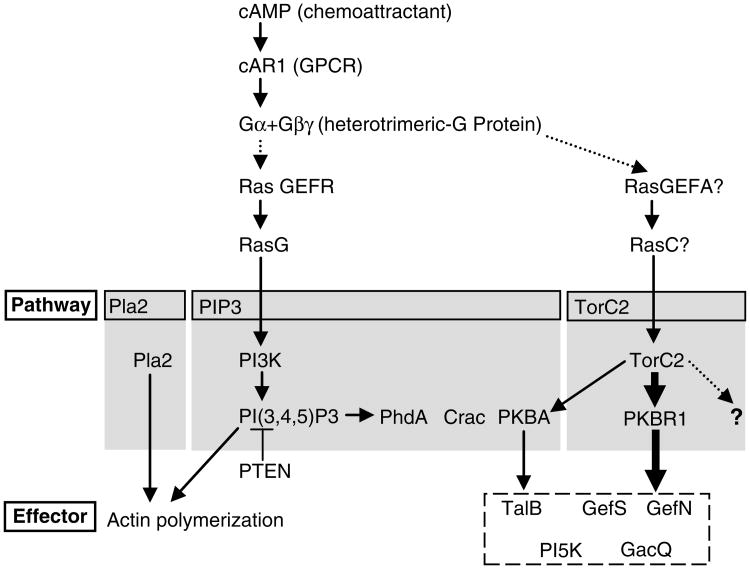Fig. 1.
Model of chemoattractant signaling pathways in Dictyostelium discoideum. The chemoattractant, cAMP, binds to the cAR1 and activates the heterotrimeric G-protein. The activation conveys signals via multiple pathways to successfully achieve chemotaxis. The indicated Ras proteins thought to be locally activated at the front of cells are suggested to regulate PI3K and TorC2 activities. PIP3 production resulting from the countered reactions of PI3K and PTEN causes the recruitment of PH domain containing proteins, PhdA, Crac, and PKBA. Pla2 activity is required for the actin polymerization in parallel with PIP3 pathway. TorC2 organizes the cAMP information through PKB and other undefined activities. PKB activity is composed of PKBR1, a more predominant activity and completely dependent on TorC2 for activation, and PKBA, a minor activity dependent on recruitment to PIP3 and TorC2 (heavier or lighter arrows). Together these phosphorylate several substrates, for example, Talin B (TalB), RasGEFS (GefS), RasGEFN (GefN), PI5K, and Rho GAPQ (GacQ).

